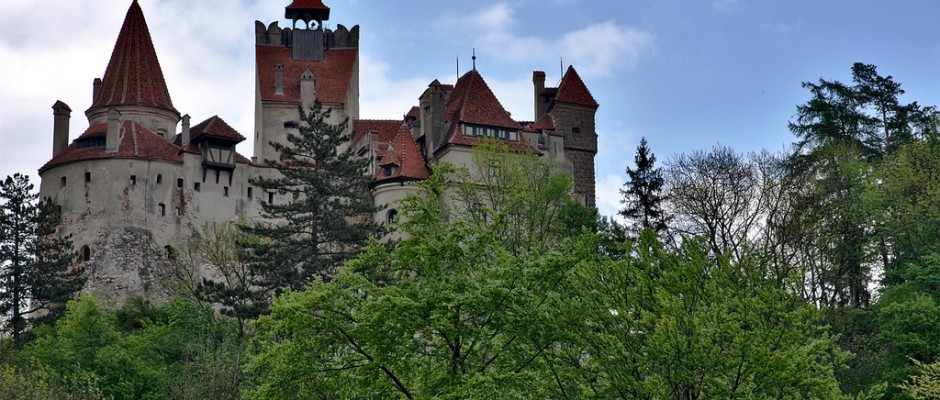Still Fresh blood needed at Dracula’s €70M Bran castle
In 1212, Teutonic Knights built the wooden castle of Dietrichstein as a fortified position in the Burzenland at the entrance to a mountain valley through which traders had travelled for more than a millennium, but in 1242 it was destroyed by the Mongols. The first documented mentioning of Bran Castle is the act issued by Louis I of Hungary on November 19, 1377, giving the Saxons of Kronstadt (Brașov) the privilege to build the stone citadel on their own expense and labor force; the settlement of Bran began to develop nearby. In 1438–1442, the castle was used in defense against the Ottoman Empire, and later became a customs post on the mountain pass between Transylvania and Wallachia. It is believed the castle was briefly held by Mircea the Elder of Wallachia during whose period the customs point was established. The Wallachian ruler Vlad Țepeș (Vlad the Impaler) 1448–1476 does not seem to have had a significant role in the history of the fortress, although he passed several times through the Bran Gorge. Bran Castle belonged to the Hungarian Kings but due to King Vladislas II’s failure to repay loans, the city of Brasov gained possession of the fortress in 1533. Bran played a militarily strategic role up to the mid-18th century.
In 1920, the castle became a royal residence within the Kingdom of Romania. It became the favorite home and retreat of Queen Marie. The castle was inherited by her daughter Princess Ileana who ran a hospital there in World War II: it was later seized by the communist regime with the expulsion of the royal family in 1948.
On May 12, 2014 it was reported that the current owner, Archduke Dominic, has placed the castle on the open market for sale after reportedly offering it to the government of Romania for $80 Million (€70M)
By most accounts, Vlad III was born in 1431 in what is now Transylvania, the central region of modern-day Romania. However, the link between Vlad the Impaler and Transylvania is tenuous, according to Florin Curta, a professor of medieval history and archaeology at the University of Florida.
“[Stoker’s] Dracula is linked to Transylvania, but the real, historic Dracula, Vlad III never owned anything in Transylvania,” Curta told: Bran Castle, a modern-day tourist attraction in Transylvania that is often referred to as Dracula’s castle, was never the residence of the Wallachian prince, he added.
“Because the castle is in the mountains in this foggy area and it looks spooky, it’s what one would expect of Dracula’s castle,” Curta said. “But he [Vlad III] never lived there. He never even stepped foot there.”
Source: en.wikipedia.org/wiki/Bran_Castle
Photo credit: Horia Varlan / Foter / CC BY

